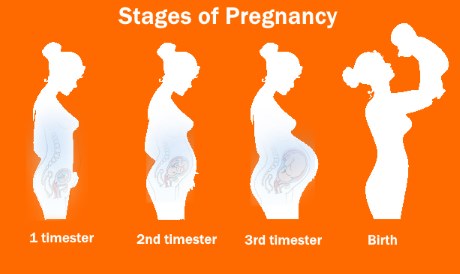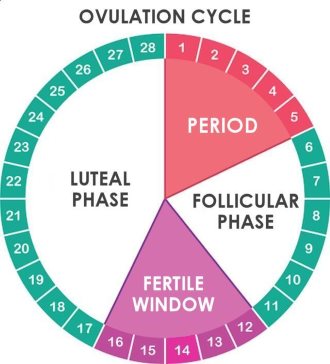UK Baby Names Directory
Pregnancy
Stages of Pregnancy, 1st, 2nd, 3rd Trimester

Conception
Definition of Conception & Meaning
The definition of conception is the process of becoming pregnant or the origin of anything.
What is conception mean in pregnancy?
The moment of conception is when the woman’s ovum (egg) is fertilised by the man’s sperm. when a sperm cell from a fertile man swims up through the vagina and into the uterus of a woman and joins with the woman's egg cell.
The moment of conception is when the woman’s ovum (egg) is fertilised by the man’s sperm. when a sperm cell from a fertile man swims up through the vagina and into the uterus of a woman and joins with the woman's egg cell.
Stages of pregnancy
The Three Stages of Pregnancy - (1st, 2nd, and 3rd Trimester)First Trimester
Conception to about the 12th week of pregnancy marks the first trimester.
The early changes that signify pregnancy become present in the first trimester. A missed period may be the first sign that fertilization and implantation have occurred, ovulation has ceased, and you are pregnant. Other changes will also occur.
signs of early pregnancy in many women include symptoms like
Extreme fatigue
Tender, swollen breasts. Nipples may protrude.
Nausea with or without throwing up (morning sickness)
Cravings or aversion to certain foods
Mood swings
Constipation Weight gain
The end of the first trimester is at about week 12 - baby's development
The nerves and muscles begin to work together. Your baby can make a fist.
The external sex organs show if your baby is a boy or girl.
Eyelids close to protect the developing eyes. They will not open again until week 28.
Head growth has slowed, and your baby is about 3 inches long, and weighs almost an ounce.
Second Trimester
Second trimester: Week 13 – Week 28Once you enter the second trimester you may find it easier than the first. Your nausea (morning sickness) and fatigue may lessen or go away completely, and you will also notice more changes to your body. That baby bump will start to show as your abdomen expands with the growing baby.
End of Week 28
Your baby now weighs about 1 kg (1,000 g) or 2 lb 2oz (two pounds, two ounces) and measures about 25 cm (10 inches) from crown to rump. The crown-to-toe length is around 37 cm. The growing body has caught up with the large head and the baby now seems more in proportion.Your baby has a regular sleep cycle.
If your baby is a boy, his testicles begin to descend into the scrotum. If your baby is a girl, her uterus and ovaries are in place, and a lifetime supply of eggs has formed in the ovaries.
Third Trimester
Third Trimester: Week 29 – Week 40 (birth)The third trimester is the final stage of pregnancy. Discomforts that started in the second trimester will likely continue, The baby spends most of its time asleep. Its movements are strong and coordinated. It has probably assumed the head down position by now, in preparation for birth. You may find you have difficulty breathing and have to urinate more frequently, this is normal and once you give birth these problems should go away.
Third Trimester: Changes as the Due Date Approaches
Other changes are happening in your body during the third trimester that you can't see. As your due date approaches, your cervix becomes thinner and softer in a process called effacement that helps the cervix open during childbirth.The baby is around 51 cm in length and ready to be born. It is unknown exactly what causes the onset of labour. It is most likely a combination of physical, hormonal and emotional factors between the mother and baby.
Average birth weight is between 6 pounds 2 ounces to 9 pounds 2 ounces and average length is 19 to 21 inches long, but healthy babies come in many different weights and sizes.
What is the menstrual cycle' style='float:left;padding:5px;' width=330 height=240/>
Pregnancy Development Stages
Ovulation & Meaning
Ovulation is the process in which a mature egg is released from the ovary. After it's released, the egg moves down the fallopian tube and stays there for 12 to 24 hours, where it can be fertilized.
Conception
Definition of Conception & Meaning
The definition of conception is the process of becoming pregnant or the origin of anything.
What is conception mean in pregnancy?
The moment of conception is when the woman’s ovum (egg) is fertilised by the man’s sperm. when a sperm cell from a fertile man swims up through the vagina and into the uterus of a woman and joins with the woman's egg cell.
The moment of conception is when the woman’s ovum (egg) is fertilised by the man’s sperm. when a sperm cell from a fertile man swims up through the vagina and into the uterus of a woman and joins with the woman's egg cell.
Stages of pregnancy
The Three Stages of Pregnancy - (1st, 2nd, and 3rd Trimester)First Trimester
Conception to about the 12th week of pregnancy marks the first trimester.
The early changes that signify pregnancy become present in the first trimester. A missed period may be the first sign that fertilization and implantation have occurred, ovulation has ceased, and you are pregnant. Other changes will also occur.
signs of early pregnancy in many women include symptoms like
Extreme fatigue
Tender, swollen breasts. Nipples may protrude.
Nausea with or without throwing up (morning sickness)
Cravings or aversion to certain foods
Mood swings
Constipation Weight gain
The end of the first trimester is at about week 12 - baby's development
The nerves and muscles begin to work together. Your baby can make a fist.
The external sex organs show if your baby is a boy or girl.
Eyelids close to protect the developing eyes. They will not open again until week 28.
Head growth has slowed, and your baby is about 3 inches long, and weighs almost an ounce.
Second Trimester
Second trimester: Week 13 – Week 28Once you enter the second trimester you may find it easier than the first. Your nausea (morning sickness) and fatigue may lessen or go away completely, and you will also notice more changes to your body. That baby bump will start to show as your abdomen expands with the growing baby.
End of Week 28
Your baby now weighs about 1 kg (1,000 g) or 2 lb 2oz (two pounds, two ounces) and measures about 25 cm (10 inches) from crown to rump. The crown-to-toe length is around 37 cm. The growing body has caught up with the large head and the baby now seems more in proportion.Your baby has a regular sleep cycle.
If your baby is a boy, his testicles begin to descend into the scrotum. If your baby is a girl, her uterus and ovaries are in place, and a lifetime supply of eggs has formed in the ovaries.
Third Trimester
Third Trimester: Week 29 – Week 40 (birth)The third trimester is the final stage of pregnancy. Discomforts that started in the second trimester will likely continue, The baby spends most of its time asleep. Its movements are strong and coordinated. It has probably assumed the head down position by now, in preparation for birth. You may find you have difficulty breathing and have to urinate more frequently, this is normal and once you give birth these problems should go away.
Third Trimester: Changes as the Due Date Approaches
Other changes are happening in your body during the third trimester that you can't see. As your due date approaches, your cervix becomes thinner and softer in a process called effacement that helps the cervix open during childbirth.The baby is around 51 cm in length and ready to be born. It is unknown exactly what causes the onset of labour. It is most likely a combination of physical, hormonal and emotional factors between the mother and baby.
Average birth weight is between 6 pounds 2 ounces to 9 pounds 2 ounces and average length is 19 to 21 inches long, but healthy babies come in many different weights and sizes.
What is the menstrual cycle
Ovulation Calculator,fertile period calculator

For our Ovulation Calculator to be the most accurate and useful, you'll need to keep track of the dates of your recent menstrual periods.
Your cycle length is the number of days between the first day of bleeding of one period, and the first day of bleeding of the next. This can vary from 23 to 35 days, and 28 days is about average. If you have irregular menstrual cycles, calculating your ovulation date can be more difficult, but we suggest going by your shortest period date to ensure you don’t miss your ovulation date. Ovulation urine tests can give you some idea of your fertility window, or you might find further advice from your GP or fertility specialist useful.

How we calculate your fertile days
The Ovulation Calculator estimates when you'll ovulate by counting back 14 days from the day you expect your next period. (If your cycle is 28 days long, your next period should start 28 days from the first day of your last period.)Your fertile window includes the day you ovulate and the five days before, but keep in mind that you're much more likely to get pregnant during the last three days of this time frame.
for your understanding Ovulation Calculator
Usual cycle length : 28 Days
First day of your last period : 01/01/2022
Your fertile windows would be : 6 February – 11 February, if you continue to have regular cycles.
Your fertile window after that will be: 6 March – 11 March
Please note: If the first day of your period or your cycle length changes, you will need to recalculate
What is the menstrual cycle' style='float:left;padding:5px;' width=330 height=350/>
Ovulation Date Calculator
Ovulation calculator
Knowing the days you are most likely to be fertile can increase your chance of getting pregnant. The typical menstrual cycle is 28 days long, but each woman is different. There are about 6 days during each menstrual cycle when you can get pregnant. This is called your fertile window.
If you’re trying to fall pregnant, the timing of when you and your partner have intercourse is critical.
Ovulation Calculator will help you understand your 'fertile window' – or your window of opportunity to fall pregnant during a normal menstrual cycle. You should be having sex every couple of days during your fertile window.
For our Ovulation Calculator to be the most accurate and useful, you'll need to keep track of the dates of your recent menstrual periods.
Your cycle length is the number of days between the first day of bleeding of one period, and the first day of bleeding of the next. This can vary from 23 to 35 days, and 28 days is about average. If you have irregular menstrual cycles, calculating your ovulation date can be more difficult, but we suggest going by your shortest period date to ensure you don’t miss your ovulation date. Ovulation urine tests can give you some idea of your fertility window, or you might find further advice from your GP or fertility specialist useful.

How we calculate your fertile days
The Ovulation Calculator estimates when you'll ovulate by counting back 14 days from the day you expect your next period. (If your cycle is 28 days long, your next period should start 28 days from the first day of your last period.)Your fertile window includes the day you ovulate and the five days before, but keep in mind that you're much more likely to get pregnant during the last three days of this time frame.
for your understanding Ovulation Calculator
Usual cycle length : 28 Days
First day of your last period : 01/01/2022
Your fertile windows would be : 6 February – 11 February, if you continue to have regular cycles.
Your fertile window after that will be: 6 March – 11 March
Please note: If the first day of your period or your cycle length changes, you will need to recalculate
What is the menstrual cycle
Tips for a Healthy Pregnancy
![<style>
td {border-bottom:1px solid #cccccc; font-size:0.90em}
a,a:hover{color:#1e1e1e;}
div { padding-top:15px;
line-height:1.6em;
text-justify: inter-word;
}
</style>
<h3>Health Tips for Pregnant Women</h3>
<div>
Before you can take care of your new baby, you need to take care of yourself and your unborn child. There’s a lot of advice out there. Much of it is common sense, but some things – like avoiding cat litter – might be news. Your first tip: As soon as you suspect you’re pregnant, see your doctor and visit Pregnancy and Childbirth
</div>
<div>
<b> Tips to relax in pregnancy</b><br/><br/>
<script async src="https://pagead2.googlesyndication.com/pagead/js/adsbygoogle.js?client=ca-pub-9647655268919341"
crossorigin="anonymous"></script>
<!-- UKBlog -->
<ins class="adsbygoogle"
style="display:block"
data-ad-client="ca-pub-9647655268919341"
data-ad-slot="3963486114"
data-ad-format="auto"
data-full-width-responsive="true"></ins>
<script>
(adsbygoogle = window.adsbygoogle || []).push({});
</script>
Take a prenatal vitamin<br/>
Exercise regularly<br/>
Educate yourself<br/>
Change your chores (avoid harsh or toxic cleaners, heavy lifting)<br/>
Track your weight gain (normal weight gain is 25-35 pounds)<br/>
Get comfortable footwear<br/>
Eat folate-rich foods (lentils, asparagus, oranges, fortified cereals)<br/>
Eat calcium-rich foods (dairy, canned fish, soy)<br/>
Eat more fish (except those high in mercury )<br/>
Eat foods with fiber<br/>
Don’t eat soft cheeses (unpasteurized styles like Brie and feta may contain bacteria that can cause fever, miscarriage or pregnancy complications)<br/><br/>
Eat your veggies<br/>
Eat five or six well-balanced meals each day<br/>
But don’t overeat. <br/>
You only need 300-500 additional calories per day. Keep a food diary.<br/>
<br/>
Limit caffeine<br/>
Drink plenty of fluids (six 8-ounce glasses of water per day)<br/>
During the prenancy - Don’t drink alcohol<br/>
Fly smart (avoid air travel if possible early and late in pregnancy)<br/>
Avoid changing cat litter (to reduce risk of toxoplasmosis)<br/>
<br/>
Know when to call your doctor with concerns<br/>
Don’t smoke; avoid secondhand smoke<br/>
Get enough sleep<br/>
Wear your seatbelt in car driving<br/>
Don’t take over-the-counter medications or herbal remedies without medical consultation<br/>
<br/>
Tour birth facilities<br/>
Practice relaxation techniques daily (yoga, stretching, deep breathing, massage)<br/>
Don’t overmedicate<br/>
Exercise, but don’t overdo it<br/>
Stretch before bed to avoid leg cramps<br/>
</div>
<div>
Have a lot of green fresh vegetables and fruits. Stay hydrated by having plenty of fluids and water. Avoid processed and other fatty foods to maintain a healthy weight, as much weight gain can interfere with the chances of having a normal delivery.
</div>
<br/>
<u><a href="http://babynames.localbiz-directory.com/menstrual-cycle.php" target="_blank">What is the menstrual cycle</a></u>](http://london.localbiz-directory.com/images/pregnancy-tips.jpg)
Health Tips for Pregnant Women
Before you can take care of your new baby, you need to take care of yourself and your unborn child. There’s a lot of advice out there. Much of it is common sense, but some things – like avoiding cat litter – might be news. Your first tip: As soon as you suspect you’re pregnant, see your doctor and visit Pregnancy and Childbirth
Tips to relax in pregnancy
Take a prenatal vitamin
Exercise regularly
Educate yourself
Change your chores (avoid harsh or toxic cleaners, heavy lifting)
Track your weight gain (normal weight gain is 25-35 pounds)
Get comfortable footwear
Eat folate-rich foods (lentils, asparagus, oranges, fortified cereals)
Eat calcium-rich foods (dairy, canned fish, soy)
Eat more fish (except those high in mercury )
Eat foods with fiber
Don’t eat soft cheeses (unpasteurized styles like Brie and feta may contain bacteria that can cause fever, miscarriage or pregnancy complications)
Eat your veggies
Eat five or six well-balanced meals each day
But don’t overeat.
You only need 300-500 additional calories per day. Keep a food diary.
Limit caffeine
Drink plenty of fluids (six 8-ounce glasses of water per day)
During the prenancy - Don’t drink alcohol
Fly smart (avoid air travel if possible early and late in pregnancy)
Avoid changing cat litter (to reduce risk of toxoplasmosis)
Know when to call your doctor with concerns
Don’t smoke; avoid secondhand smoke
Get enough sleep
Wear your seatbelt in car driving
Don’t take over-the-counter medications or herbal remedies without medical consultation
Tour birth facilities
Practice relaxation techniques daily (yoga, stretching, deep breathing, massage)
Don’t overmedicate
Exercise, but don’t overdo it
Stretch before bed to avoid leg cramps
Take a prenatal vitamin
Exercise regularly
Educate yourself
Change your chores (avoid harsh or toxic cleaners, heavy lifting)
Track your weight gain (normal weight gain is 25-35 pounds)
Get comfortable footwear
Eat folate-rich foods (lentils, asparagus, oranges, fortified cereals)
Eat calcium-rich foods (dairy, canned fish, soy)
Eat more fish (except those high in mercury )
Eat foods with fiber
Don’t eat soft cheeses (unpasteurized styles like Brie and feta may contain bacteria that can cause fever, miscarriage or pregnancy complications)
Eat your veggies
Eat five or six well-balanced meals each day
But don’t overeat.
You only need 300-500 additional calories per day. Keep a food diary.
Limit caffeine
Drink plenty of fluids (six 8-ounce glasses of water per day)
During the prenancy - Don’t drink alcohol
Fly smart (avoid air travel if possible early and late in pregnancy)
Avoid changing cat litter (to reduce risk of toxoplasmosis)
Know when to call your doctor with concerns
Don’t smoke; avoid secondhand smoke
Get enough sleep
Wear your seatbelt in car driving
Don’t take over-the-counter medications or herbal remedies without medical consultation
Tour birth facilities
Practice relaxation techniques daily (yoga, stretching, deep breathing, massage)
Don’t overmedicate
Exercise, but don’t overdo it
Stretch before bed to avoid leg cramps
Have a lot of green fresh vegetables and fruits. Stay hydrated by having plenty of fluids and water. Avoid processed and other fatty foods to maintain a healthy weight, as much weight gain can interfere with the chances of having a normal delivery.
What is the menstrual cycle
Latest Post
/Pregnancy
/TOP 10 Baby Names
/Pregnancy
/Pregnancy
/England Baby Names
